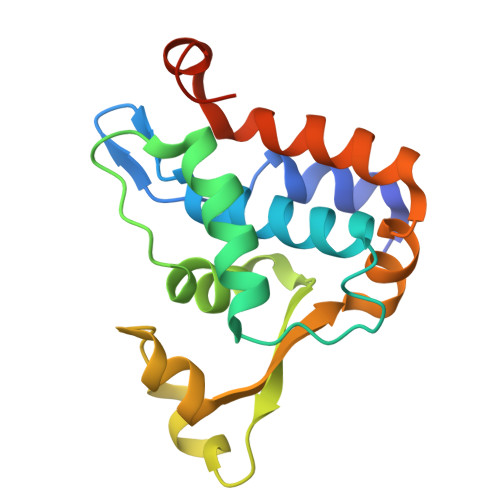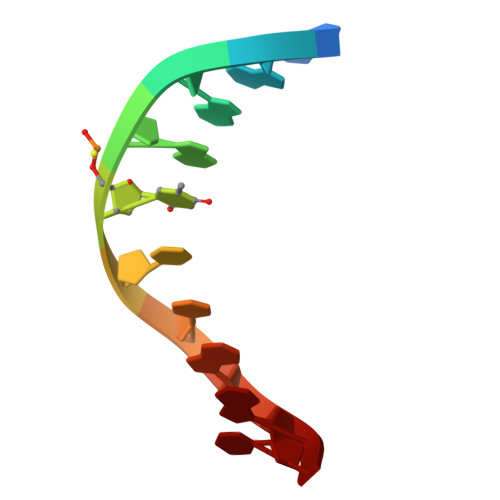Characterization of a promiscuous DNA sulfur binding domain and application in site-directed RNA base editing.
Hu, W., Yang, B., Xiao, Q., Wang, Y., Shuai, Y., Zhao, G., Zhang, L., Deng, Z., He, X., Liu, G.(2023) Nucleic Acids Res 51: 10782-10794
- PubMed: 37702119
- DOI: https://doi.org/10.1093/nar/gkad743
- Primary Citation of Related Structures:
8H0L - PubMed Abstract:
Phosphorothioate (PT)-modification was discovered in prokaryotes and is involved in many biological functions such as restriction-modification systems. PT-modification can be recognized by the sulfur binding domains (SBDs) of PT-dependent restriction endonucleases, through coordination with the sulfur atom, accompanied by interactions with the DNA backbone and bases. The unique characteristics of PT recognition endow SBDs with the potential to be developed into gene-targeting tools, but previously reported SBDs display sequence-specificity for PT-DNA, which limits their applications. In this work, we identified a novel sequence-promiscuous SBDHga from Hahella ganghwensis. We solved the crystal structure of SBDHga complexed with PT-DNA substrate to 1.8 Å resolution and revealed the recognition mechanism. A shorter L4 loop of SBDHga interacts with the DNA backbone, in contrast with previously reported SBDs, which interact with DNA bases. Furthermore, we explored the feasibility of using SBDHga and a PT-oligonucleotide as targeting tools for site-directed adenosine-to-inosine (A-to-I) RNA editing. A GFP non-sense mutant RNA was repaired at about 60% by harnessing a chimeric SBD-hADAR2DD (deaminase domain of human adenosine deaminase acting on RNA), comparable with currently available RNA editing techniques. This work provides insights into understanding the mechanism of sequence-specificity for SBDs and for developing new tools for gene therapy.
Organizational Affiliation:
State Key Laboratory of Microbial Metabolism, Joint International Research Laboratory of Metabolic & Developmental Sciences, School of Life Sciences & Biotechnology, Shanghai Jiao Tong University, 800 Dongchuan Road, Shanghai 200240, People's Republic of China.

















